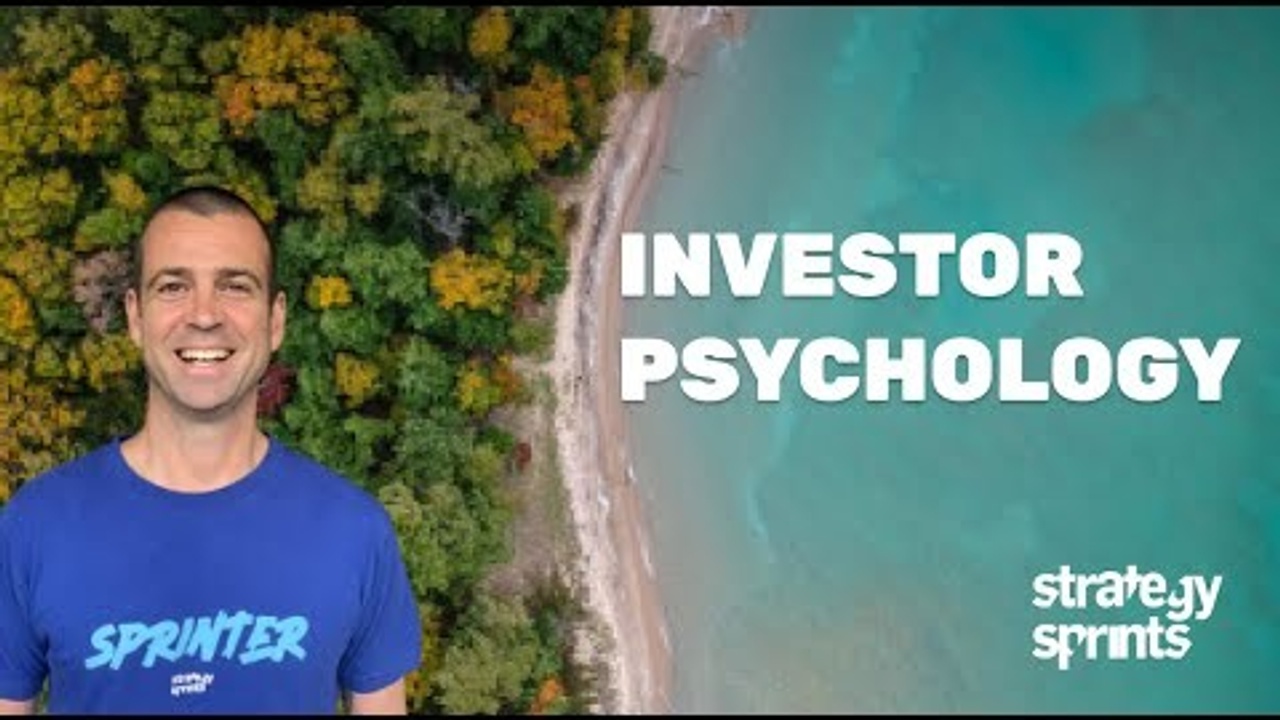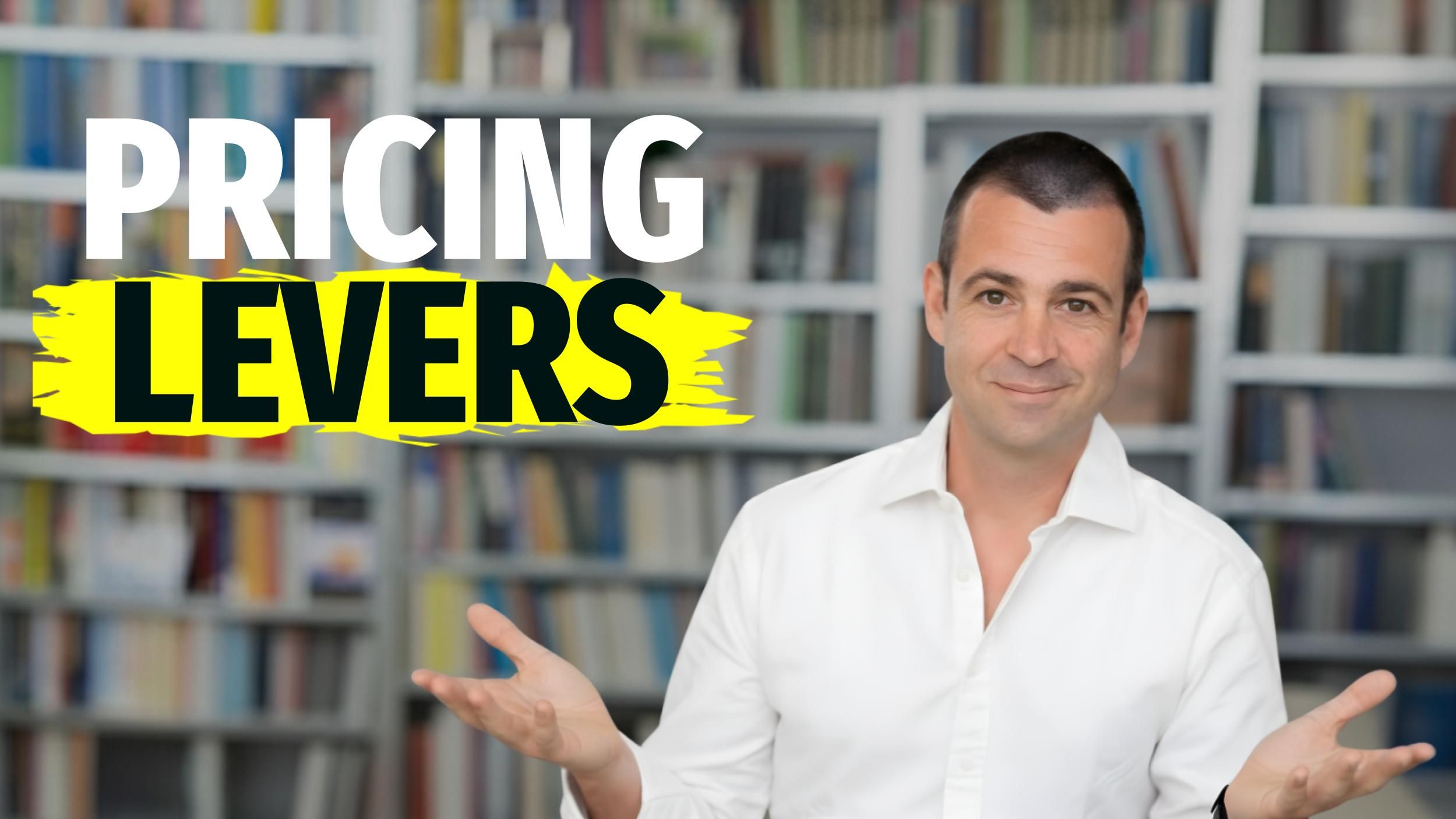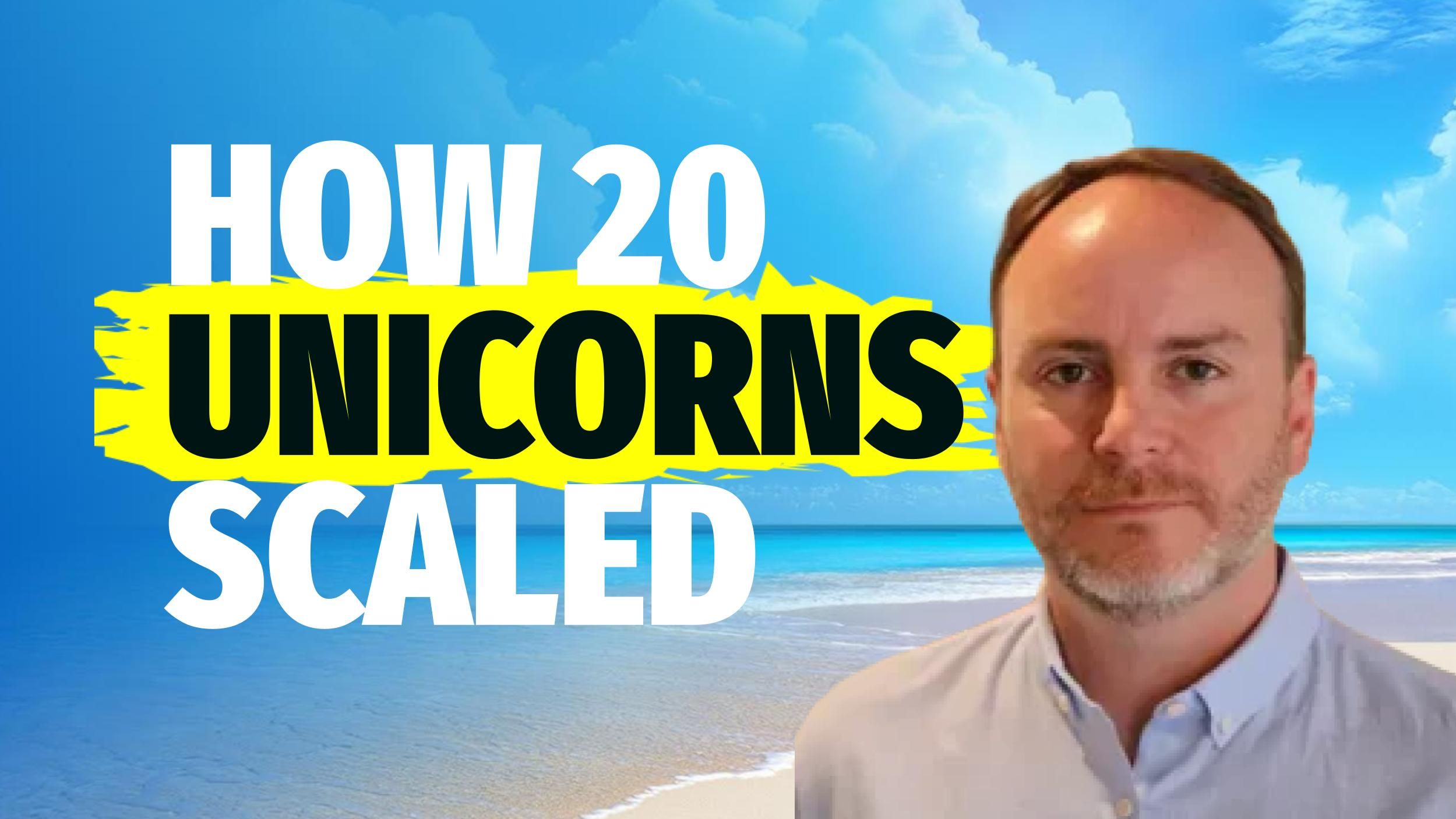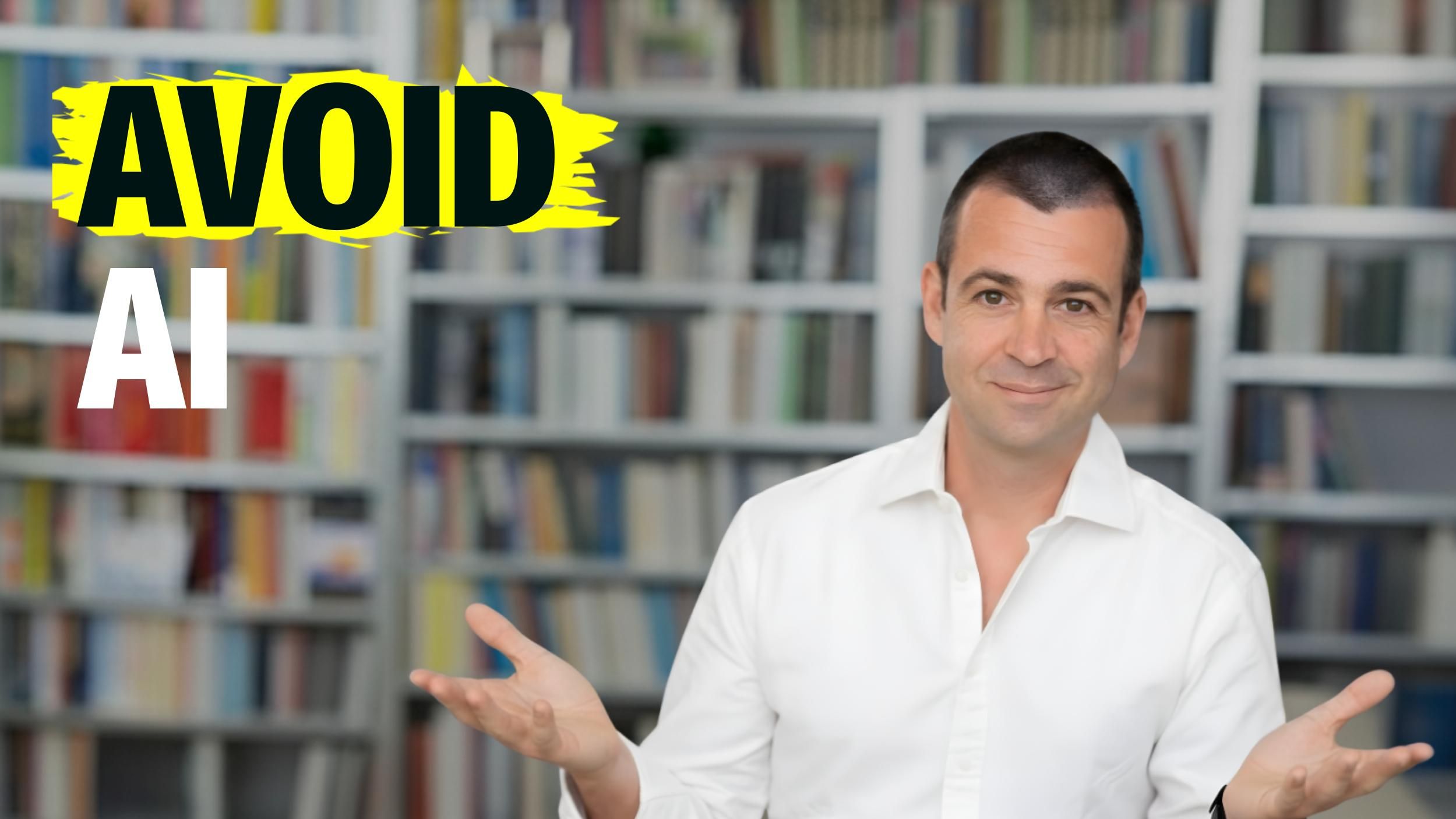
Investor Psychology
Getting more risk
Sprinters welcome back today. I want to talk about investor psychology, because many of you say, Hey Simon, this crypto investing stresses me out. Equities investing stresses me out. I go back to EDFS and other years saying, Hmm, EDFS are quite well protected, but I'm missing out on you guys. Eight Xing, 12 Xing staff. I wanna get more risky. So let's, let's talk about both because we have to balance. So if we are the risk type, we have to be aware of it. And we have to create a system that protects. And if we are the safety type, we need a system that helps us also gain the upside and not just protect the downside. So in both cases, we need systems. And if you know our philosophy here on the channel is that emotions should not drive your decision making. We are highly emotional. I'm Italian, I'm super emotional.
I love Tesla and I love apple and I hate Microsoft, but sometimes Microsoft is a good lie and sometimes Tesla, less, a good sell, and sometimes apple is a good sell. So I will not allow that I become victim of my emotions. I will have systems that tell me when to get in when to get out and then I will even automate them so that they automatically sell at some point that they automatically buy at some point, this is what I want to share with you, the journey as an investor, from being victim of emotions, to be not driven by emotions and have helpful systems. And I will share with some insights about trading psychology, but also how you can create your own system. And I will share my own system in this session, right? So, and by the way, let me share with you that I am drinking tea as I talk to you and thank you to Greg in our community, who is an amazing friend that gives me tips on where to learn about tea and where to buy good tea, because yeah, it, that is for me, one of the habits and one of elements of my systems that really helps me be just a cold follower of my own sea.
So let's grab a tea and jump into systems right now. So there are personality types. We have to think about risk reward and risk appetite, and we have to think about stages, right? And there are some pretty cool books and articles there. So personality types, if we just look at the numbers this is not super hard science, but there is numbers showing that the winners are in terms of personality types, the introverted thinker, analytical people, and judger, judger are people who always see the problems and are quite pessimistic and introverted because they just run the numbers and look at things instead of, you know being constantly inspire than on conferences, they sit down and, and do the boring numbers. So 81% of successes are with introverted thinker, judger type of personalities. If you're like me, you are exactly the opposite, right?
So you would be one of the losers. And I would definitely be if, if, if I would allow myself to go just with my intuition, because I'm a feeler, perceiver, intuitive person. And so I would jump from, from Tesla to Tesla instead of staying three years with Tesla, for example. And the feeler perceive types need systems even more than the others cause the others have the discipline to run the numbers. And so this is why it's important that you, you do a quick check and awareness of which type are you. I don't think you have to go through any websites and do analysis. I think just, you know, yourself of what are your patterns? How do you take what moves you and then create a balance in there? What is the element that you need more of build it into your system, that there is risk appetite.
Where money is made
Some people are risk lovers and some people are, are safety lovers, right? The risk lovers. They go hard into a few equities, into a few cryptos. They love crypto of course, because yeah, it's high risk, high reward. This is where money is made. They run into a dips and they buy more. They need a system to protect themselves for, from the weeks down because, you know, you can have 90% drawdowns in crypto and in growth stocks as we are seeing them. So they need a system that protects them from the downside. And then there is the safety lovers, safety lovers are people who can tell you everything about ETFs. And they have a utility ATF right now, and then energy ETF and the commodity ATF. And they have emerging markets iShares, emerging markets and the iShares, large cap and iShares midcap, and some nest and some, no, the nest is too risky for them.
They have some S P 500. And so they have a very good protection from the downside. Congrats. They need a system that helps them, you know, also gain from the opportunities. Also having some upside explosion, not just downside explosion, cause an ETF will never 12 X. However, however, however, the length of your life is even with modern medicine. And then you have investor stages where basically at the beginning, whenever you start, of course you are more frantic and sporadic and then bit by beat you through the six stages. And there are, there's an article that describes those six stages, happy to share it with you. And then there is a book that I really like by Jake Ryan and it's called crypto investing in the age of autonomy and it's really good. He describes his own system and it's, he, he went through all the six stages and it's really cool.
Now let's see if I can share the six stages article with you. Yeah, I think I can. So strategies, prince.com/blog. I'm, I've wrote about the six stages from, you know, being at the beginning, very victim of emotions to seeing the full picture to ha building your own system and what that means for you. So six, six stages and stage number six described very well by grayer is what I summarized. Basically you have rules and you follow those rules, those rules protect you, but they give you also upside chance. So if you wanna check that it's strategies, sprint.com/blog, six investor stages, then name of the article. And now let me share with you the practical side, right? So the practical side, really, if you ask me, is that you need those, you need a system and depending on your type, it needs either to protect you from risk or the give you more exposure to the upside.
But the elements are the same for both how you create it. Stage one, you create your portfolio construction. So how much do you want in what, for example, real estate, how much do you want? I want 20% for my age and my risk, a and my type and my goals for me, 20% real estate is the right thing. And then how much crypto exposure do you want and how much equity exposure do you want and maybe how much cash do you want. And then maybe you have alternatives also. But for example, myself, right now, it's a 20% real estate, 35% crypto exposure, 35% equities and 10% cash. That's what I mean right now. And in some stages of the year, I moved to more cash up to 20%. If I see that we have rotations in the bear markets, because that's where I wanna buy and I move to less cash in other phases and cycles.
And I always have my current and my ideal visualized so that I know what to, to rebalance when to rebalance. I also think about the categories that I want to have, how much is in store value, how much is in smart contracts, layer one, how much is in smart contracts, layer two, how much is in metaverse, et cetera. And I have a risk distribution, of course, how much safe place and how, how much do I want to been very risky place, same thing with equities, where is my biggest allocation and where do I play more speculative bets? And it's really important that you have an entry system and an exit system. For example, right now this is my current virus. I will buy Tesla at 8 35. I will sell at 100 1,480, whatever happens, of course, when 1,480 comes, I know that I will feeling, oh no, this goes to the moon. Let me be part of the moon, but I will not let that emotion make me a victim. Now I will have set that limit order already. And it will sell automatically. I don't have to follow my emotions. I just follow my system because I trust my system because it's enough months and years that I'm using it.
Part of the future research
And then I have my checklist, what do I do in weak markets and strong markets, but basically this is the system. This is the system. And then I have a few more rules that I don't go for a hundred X. I go for 10 X and for 10 X, because I wanna put in also just one hour per week. And I just need to hit three winners and seven losers. And that's realistic with my capacity time, capacity and intellectual capacity. So yeah, I limit myself to a few assets And that's a system as you can see right now. So I drink my teeth chin And I'm not driven by emotions. So if now friends call me and say, oh my God, you have to go in there and say, yeah, thank you for the input. And maybe it becomes part of my research tomorrow morning, but maybe not. You know, my, my research is independent of what happens. And I have in there numbers and I feel emotions, but I don't let emotions drive me. And based on the numbers, I will improve. Prove the system do more of what works, do less of what doesn't.
I do both fundamental analysis and technical analysis, but I don't believe in both fundamental analysis is quite subjective. You don't have real numbers, but it tells me something about the pattern forwards. I want to know network effects. I know want to know political risks. I want to know competition risks distribution risks, all these kind of things. I want to know because it tells me the risk. Now that's not a hard number. It's subjective. It's not objective, but it tells me something about future pattern. And that's what I wanna know. On the other side, you can do TA technical analysis that gives you objective numbers, but it's from the past and past performance does not tell you anything about future performance. So I don't really care about numbers from the past. That's why I do TA just to determine entry points, but I don't rely on it because it's the past and the past.
Doesn't tell anything about the future there. Max Kaiser said that TA is astronomy. Astrology. TA is astrology for men, I think is right. Still. I look at it in terms of doing better entry point decision in a short term situation. So I still use them, but I do not completely rely on them. I, I rely on the full system and rebalancing and learning month by month, year by year and becoming better and going through the six stages and staying in stage six and finding back to stage six. Hope that helps. Let me know what you need next. And keep rolling everybody.
Get our expert sales tips delivered
By submitting you agree to receive our weekly Strategy Sprints Newsletter as well as other promotional emails from Strategy Sprints. You may withdraw your consent at any time via the “Unsubscribe” link in any email or view our privacy policy at ant time.










